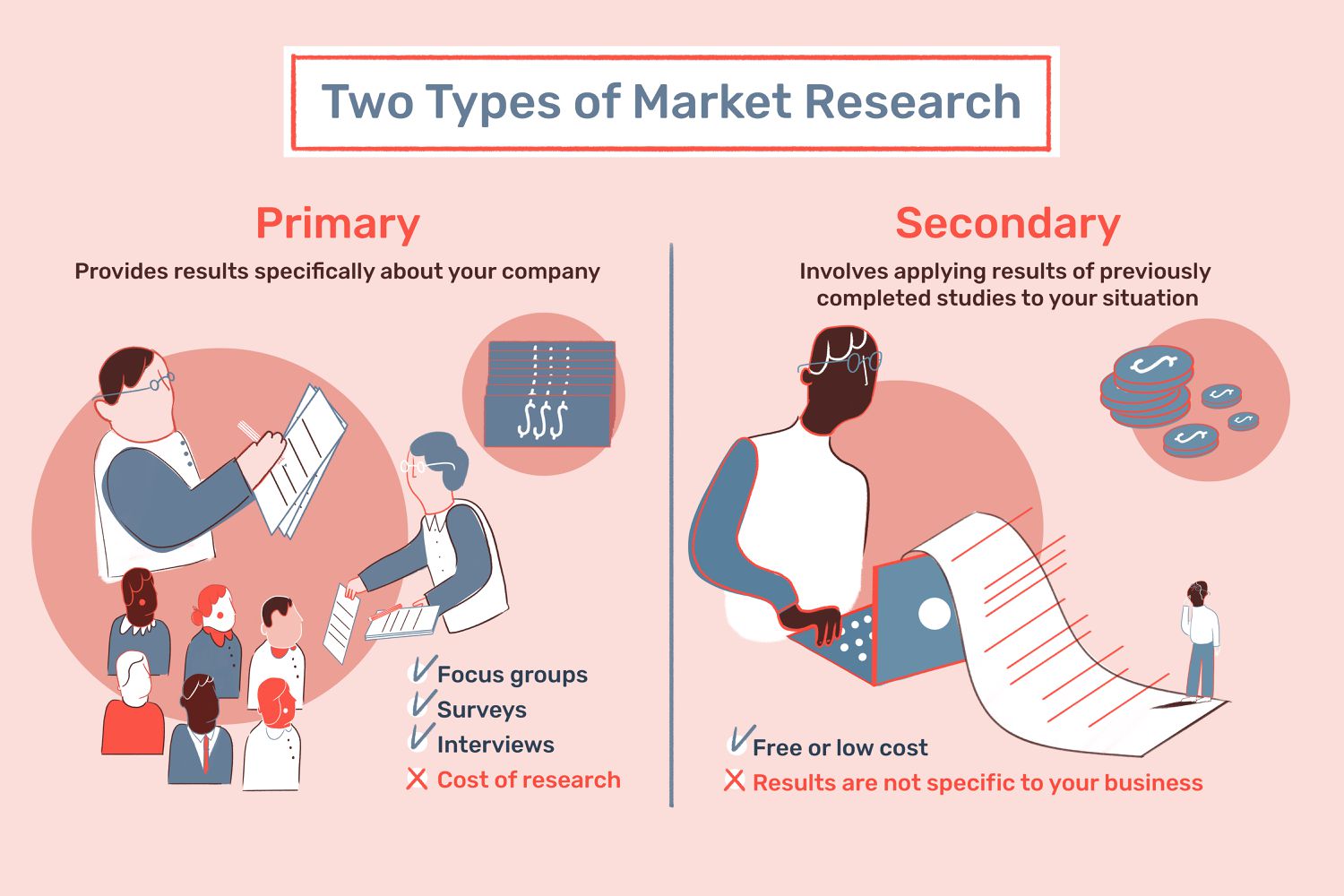Market research is a crucial component of any business strategy, providing valuable insights into consumer behavior, preferences, and market trends. By understanding the various types of market research methodologies, businesses can make informed decisions and tailor their strategies to meet consumer demands effectively.
Introduction to Types of Market Research

Market research involves gathering and analyzing data about consumers, competitors, and the overall market environment. It helps businesses identify opportunities, assess market potential, and mitigate risks.
Importance of Market Research
The types of market research enable businesses to understand customer needs, preferences, and buying behaviors. It also helps in identifying market trends, competitive landscapes, and potential areas for growth or innovation.
Exploring Primary Market Research
Primary market research involves collecting data directly from consumers through methods such as surveys, interviews, and focus groups. These techniques provide firsthand insights into consumer opinions, attitudes, and preferences.
– Surveys
Surveys are structured questionnaires administered to a sample of respondents. They can be conducted through various channels, including online surveys, phone interviews, or face-to-face interactions.
– Interviews
Interviews involve direct conversations with individuals to gather in-depth insights. They can be structured, semi-structured, or unstructured, depending on the level of flexibility needed in the conversation.
– Focus Groups
Focus groups bring together a small group of individuals to discuss specific topics or products. They allow businesses to observe group dynamics and uncover nuanced opinions and perceptions.
Understanding Secondary Market Research
Secondary market research involves analyzing existing data and information collected by others. It includes sources such as industry reports, government publications, and academic studies.
– Data Mining
Data mining involves extracting patterns and insights from large datasets using statistical techniques and algorithms. It helps businesses identify trends, correlations, and relationships within the data.
– Market Analysis Reports
Market analysis reports provide comprehensive insights into industry trends, market size, competitive landscapes, and consumer demographics. They help businesses make informed decisions and develop effective marketing strategies.
Qualitative vs. Quantitative Research
Qualitative research focuses on understanding underlying motivations, attitudes, and behaviors through techniques such as observation and open-ended questioning. Quantitative research, on the other hand, involves collecting numerical data to analyze statistical relationships and trends.
Exploratory Research Methods
Exploratory research aims to explore new ideas, concepts, or phenomena. It includes methods such as observational studies and case studies, which help researchers gain insights and generate hypotheses for further investigation.
– Observational Studies
Observational studies involve observing and recording behavior in natural settings without direct intervention. They provide valuable insights into consumer behavior and preferences in real-world environments.
– Case Studies
Case studies analyze specific instances or scenarios in-depth to understand underlying dynamics and outcomes. They are often used to illustrate theories or concepts in practical contexts.
Descriptive Research Techniques
Descriptive research aims to describe and quantify phenomena or relationships. It includes cross-sectional studies, which examine a single point in time, and longitudinal studies, which track changes over time.
– Cross-sectional Studies
Cross-sectional studies collect data from a sample of participants at a specific point in time. They provide snapshots of population characteristics and relationships.
– Longitudinal Studies
Longitudinal studies follow the same group of participants over an extended period, allowing researchers to track changes and trends over time. They provide valuable insights into long-term patterns and behaviors.
Causal Research Approaches
Causal research seeks to understand cause-and-effect relationships between variables. It includes experimental designs and test markets, which help researchers establish causality.
– Experiments
Experiments involve manipulating variables to observe their effects on outcomes. They allow researchers to conclude causality and relationships between variables.
– Test Markets
Test markets involve launching products or services in select regions to assess consumer response and market potential. They help businesses evaluate market demand and fine-tune their offerings before a full-scale launch.
Online Market Research Strategies
Online market research leverages digital channels to gather insights from consumers. It includes analyzing website analytics, monitoring social media conversations, and conducting online surveys.
Mobile Market Research Trends
With the increasing use of mobile devices, mobile market research has become increasingly prevalent. It involves collecting data through mobile apps, SMS surveys, and location-based tracking to understand consumer behavior on the go.
Ethnographic Research
Ethnographic research involves studying people and cultures in their natural environments. It provides deep insights into consumer lifestyles, behaviors, and cultural influences on purchasing decisions.
Market Research Tools and Technologies
Advancements in technology have revolutionized market research, with various tools and platforms available to gather, analyze, and visualize data. From survey software to data analytics platforms, businesses have access to powerful tools to conduct research efficiently.
Challenges
Market research faces challenges such as obtaining accurate data, managing data privacy and security, and interpreting complex datasets. Businesses must navigate these challenges to ensure the reliability and validity of their research findings.
Case Studies with Record-Breaking Examples
1. Netflix’s Use of Data Analytics in Content Creation
Netflix revolutionized how businesses leverage market research with its approach to content creation. By using a combination of primary and secondary research methods, Netflix collects data from its global audience, analyzes viewing habits, and even tailors content recommendations to individual preferences. This data-driven strategy led to massive success, with Netflix consistently breaking records for its original content. In fact, Netflix’s series “Stranger Things” broke streaming records, reaching 40.7 million accounts in its first four days of release, according to reports from the company.
2. Coca-Cola’s Marketing Strategy Overhaul
Coca-Cola’s focus on market research enabled them to reclaim their position as the global leader in the beverage industry. After conducting extensive surveys and focus groups, Coca-Cola discovered a shift in consumer preferences towards healthier beverages. By introducing drinks like Coca-Cola Zero Sugar, the company managed to appeal to a health-conscious demographic while maintaining brand loyalty. The success was evident when Coca-Cola’s sales in North America increased by 3% in the first year following the relaunch.
3. Amazon’s Customer-Centric Approach
Amazon’s dominance in e-commerce can be attributed to its continuous investment in market research. The company uses advanced data mining techniques to analyze consumer behavior and personalize shopping experiences. Amazon’s recommendation system, based on purchase history and browsing patterns, contributed to a reported 35% of Amazon’s revenue in 2020. The ability to predict and understand what customers want before they even search for it has given Amazon a significant competitive edge.
Influencer Tweets and Quotes
-
Neil Patel (@neilpatel), Digital Marketing Influencer and Founder of Neil Patel Digital
“Market research is not just about gathering data—it’s about understanding what drives customer behavior and turning that insight into actionable strategies. When done right, it transforms a business from surviving to thriving.” -
Gary Vaynerchuk (@garyvee), Entrepreneur and Author
“The future of business is data-driven, and market research gives you the competitive advantage. If you’re not studying the trends and listening to your customers, you’re going to get left behind.” -
Jay Baer (@jaybaer), Marketing & Customer Experience Expert
“Great market research is the key to customer empathy. When you truly understand your customers’ pain points, you can create solutions that resonate deeply and foster long-term loyalty.”
The Future of Market Research
The future of market research lies in embracing emerging technologies such as artificial intelligence, machine learning, and big data analytics. These technologies enable businesses to gather real-time insights, personalize customer experiences, and anticipate market trends more effectively.
Conclusion
In conclusion, the types of market research play a pivotal role in guiding business decisions and strategies. By understanding the various types of market research methodologies and techniques, businesses can stay competitive, innovate, and adapt to changing market dynamics. To experience the power of advanced market research technologies firsthand and revolutionize your business strategy, we encourage you to request a demo from AIM Technologies today.
FAQs
What is the difference between primary and secondary market research?
- Primary market research involves collecting data directly from sources like surveys, interviews, and focus groups, tailored to specific research objectives. Secondary market research, on the other hand, relies on existing data sources like reports, articles, and databases, which are already available for analysis.
How can businesses overcome challenges in conducting market research?
- Businesses can overcome challenges in market research by clearly defining research objectives, selecting appropriate methodologies, ensuring data quality, leveraging technology for data collection and analysis, and continuously evaluating and adapting research strategies.
What role does technology play in modern market research?
- Technology plays a significant role in modern market research by enabling efficient data collection, analysis, and visualization. Advanced tools and platforms facilitate real-time insights, personalized customer experiences, and predictive analytics, enhancing decision-making processes for businesses.
Why is ethnographic research important in understanding consumer behavior?
- Ethnographic research is important in understanding consumer behavior because it provides deep insights into consumer lifestyles, preferences, and cultural influences within their natural environments. By observing and immersing in consumer contexts, researchers can uncover implicit needs, motivations, and behaviors that may not be apparent through traditional research methods.
How can businesses leverage market research to improve their competitive advantage?
- Businesses can leverage market research to improve their competitive advantage by gaining insights into consumer preferences, identifying market trends, understanding competitor strategies, innovating products and services, optimizing marketing campaigns, and enhancing customer experiences based on data-driven decision-making processes.





Your article helped me a lot, is there any more related content? Thanks!